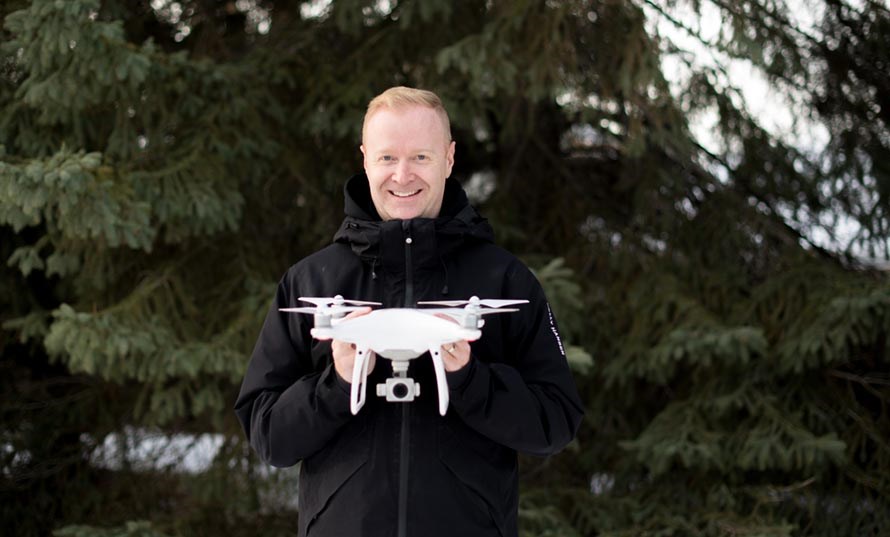As building owners and operators try to find distinctive marketing options and inexpensive alternatives for building surveillance, commercial drones are answering the call.
Chris Anderson of UAV North in Edmonton turned video-gaming into a drone-operator career focusing on golf courses, then residential buildings and now commercial facilities.
One client, a warehouse owner, wanted to ensure his tenant wasn’t changing anything on the building, such as adjusting the air conditioning unit on the roof. Anderson was hired to take video of the roof at regular, time-stamped intervals. He stitched the content together to make a visual “map” of anything undergoing changes.
Drone footage is also very popular for clients who are looking to attract tenants for their commercial property. The advantage of video over photos, said Anderson, is that even a two-minute sequence can show traffic animation and movement around neighbouring businesses in addition to geographic context and access to the site.
To attract tenants to the Stantec Tower in downtown Edmonton, for example, Anderson was asked to do a 360-degree video showing the future views to be had from the 69-storey building. He got a special permit to take his drone up to 800 feet (double the standard allowed altitude), setting a record for the highest drone flight in downtown Edmonton.
Raphael Boudreault-Simard of Flow Motion Aerials in Whistler, B.C., now does 50 per cent of his work as drone videos and 50 per cent as still photography.
“Drone videos allow you to get innovative angles and to get a good sense of the scale of a building,” said Boudreault-Simard. “We can also use drones for 3D modelling by having a drone fly around an entire building and feed information into a computer program. This can be used for insurance companies or the progress of construction plans.”
Boudreault-Simard cautions building owners to be aware of limitations when it comes to hiring a drone operator.
Four major issues to consider are government compliance, public safety, geographical location and weather.
Currently, drone operators must have a Special Flight Operations Certificate (SFOC) – a permit that allows flights under specific conditions. An SFOC is based on the reason for the flight (recreational/commercial) as well as the geographic area and the weight of the drone, among other factors. They are free, but could require several weeks or even months of waiting time. So building owners need to plan ahead and ask drone operators if they have a year-long SFOC, otherwise they have to get one for each job, which can lead to delays. If someone is not properly certified, both client and operator may end up with fines, which, according to Anderson, can soar as high as $25,000.
As well, if drone footage is used to collect any kind of evidence in property litigation scenarios, property owners should be sure the product is delivered by a reputable company that is regulation compliant, according to Gregory Liakopoulos, who is a partner in the real estate group at Bennett Jones LLP of Calgary.
“The brokerage community is trying to add value, which includes drone footage, so the question of compliance with Transport Canada regulations becomes more relevant,” said Liakopoulos. “It’s best not to have an employee who’s a ‘weekend warrior’ fly a drone trying to do something in an inexpensive way.”
Boudreauit-Simard, who is actually on his 12th-generation drone, said to check the drone company for its quality.
“Make sure you look at their videos and photo portfolio to see what kind of experience they have,” said Anderson. “Look for smooth motion in transition, not a jerky flight, and good colour.”



